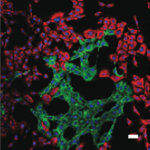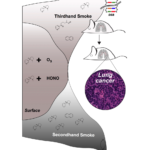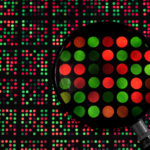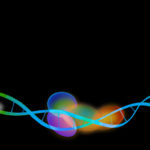When studying human cells in a laboratory, it is important that the media, or the broth that bathes the cells, contains all of the nutrients necessary to support cells through their normal growth and division phases even though they are outside of the body. Bioscientists at Berkeley Lab have a long history of studying breast cancer, and Martha Stampfer, senior scientist in the Biological Systems & Engineering (BSE) Division, has spent decades developing media now widely used by the community. Today, PLOS ONE published a study describing a comprehensive analysis of three kinds of media used to grow human mammary epithelial cells (HMEC).
Thirdhand Smoke Found to Increase Lung Cancer Risk in Mice
Cigarette smoke contains myriad compounds that are known mutagens and carcinogens, and the health risks associated with active smoking and secondhand smoke are well established. Nearly 10 years ago, researchers at Berkeley Lab identified another potentially hazardous source of tobacco exposure: “thirdhand smoke,” the toxic residues that linger on indoor surfaces and in dust long after a cigarette has been extinguished. A team led by Antoine Snijders, Jian-Hua Mao, and Bo Hang in Biosciences’ Biological Systems and Engineering (BSE) Division have determined that early thirdhand smoke exposure is also associated with increased incidence and severity of lung cancer in mice.
Researchers Probe for Cancer Clues In a Sample of Blood
One day, patients may be able to monitor their body’s response to cancer therapy just by having their blood drawn. A new study, led by Amy Herr, faculty engineer in the Biological Systems & Engineering Division, has taken an important step in that direction by measuring a panel of cancer proteins in rare, individual tumor cells that float in the blood. Read more in Berkeley News.
What a Genome-Wide Screening Can Reveal about Cancer Survival
Berkeley Lab researchers in the Biological Systems and Engineering Division have developed a 12-gene score tied to the odds of relapse-free breast cancer survival. The scoring system is based on an analysis of large genomic datasets and patient data, and it could eventually be developed for clinical use.
Antoine Snijders, research scientist, led the team that included Xuan Mao, Matthew Lee, Jeffrey Zhu and Carissa Zhu, all students from Campolindo High School in Moraga, California, who worked as interns at Berkeley Lab in 2016. “Berkeley Lab is committed to training the next generation of future cancer research scientists,” said Snijders. Under the supervision of Snijders, they led the programming effort and computational analysis that helped identify the relevant genes and that formed the basis of the scoring system. Snijders said, “It is exciting to see how these students contributed their computational skills to breast cancer research.” Read more in the Berkeley Lab News Center.
Finding Our Way Around DNA
Biosciences researchers collaborated with a team at the Salk Institute that developed a computational algorithm that integrates two different data types to make locating key regions within the genome more precise and accurate than other tools. The team’s method, recently described in Proceedings of the National Academy of Sciences, could help researchers conduct vastly more targeted searches for disease-causing genetic variants in the human genome, such as ones that promote cancer or cause metabolic disorders. Joseph Ecker, a Howard Hughes Medical Institute investigator and director of Salk’s Genomic Analysis Laboratory, was senior author of the study. Diane Dickel, Axel Visel and Len Pennacchio of the Environmental Genomics & Systems Biology Division, were co-authors, along with other researchers at the Salk Institute, UC San Diego, and UC San Francisco. Read more about the study in the Salk Institute press release.
Was this page useful?








